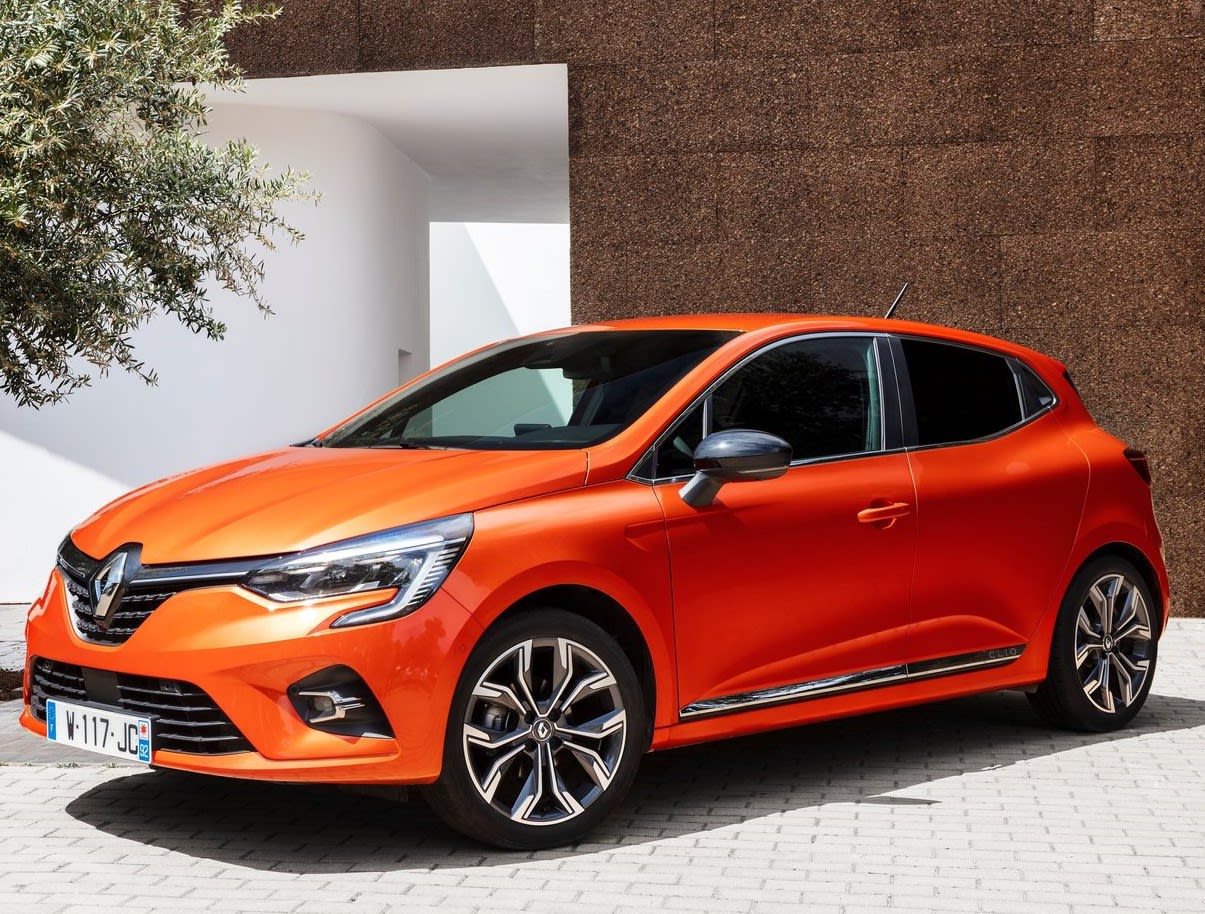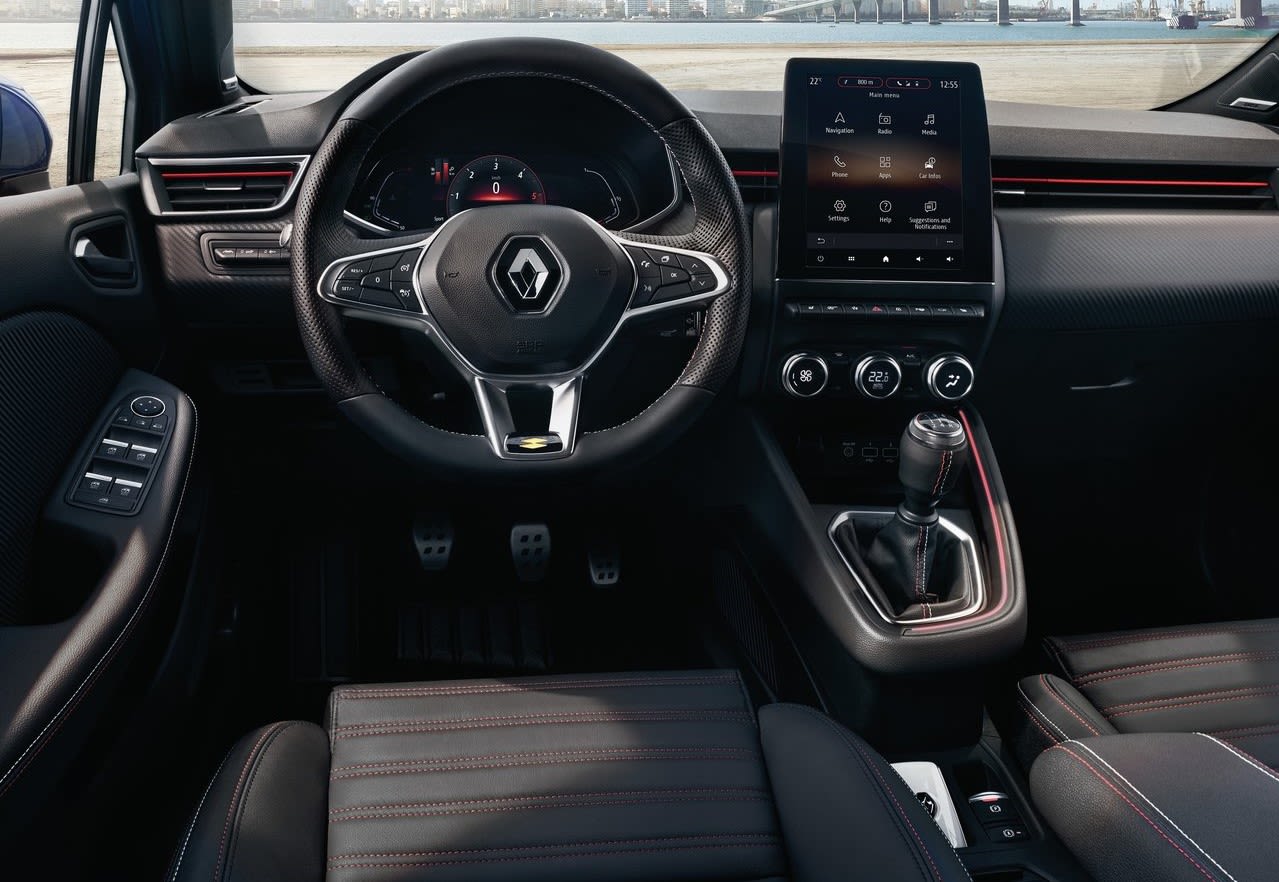.jpg)
Renault Clio Review
.jpg)
Introduction
The small hatchback market is one where brand and model familiarity count for a lot. Many people will have learned to drive in a car of this type, and so will gravitate towards a Ford Fiesta or Vauxhall Corsa subconsciously. The same is true of the Renault Clio, but with familiarity comes pressure and expectation – you want the car you think you know to be, well, good.
This latest Clio marks 30 years since the first model was introduced, and it’s doing its best to continue the legacy that’s kept it popular over so many years. In a market packed with plenty of very capable competitors, the Clio brings Gallic good looks, practicality and a range of engine and trim choices to keep a wide spectrum of customers happy. It’ll please those that grew up with the Clio, and those that are sampling it for the first time.
Review Sections
Select's rating score* - 3.9 / 5
At a Glance
It was way back in 1991 that the Clio first graced UK shores, and since then it’s been reinvented to keep it at or near the top of the sales charts. This version, launched in 2019, doesn’t look radically different from the model that preceded it, but why mess with a winning formula?
For this fifth-generation Clio, Renault has sought to make incremental adjustments and improvements, to keep it as a solid all-rounder and attract customers away from long-standing rivals like the Ford Fiesta, Vauxhall Corsa, Nissan Micra, Volkswagen Polo and Peugeot 208, as well as myriad other competitors like the Skoda Fabia, Mazda2, Seat Leon and Suzuki Swift. That’s easier said than done, because making a great small car is harder than it might seem – there’s lots of excellent competition, and manufacturers have got to get exceptional results without driving the price up.
Renault is positioning the Clio as the stylish, practical and surprisingly upmarket option, and has also made a hybrid version to go alongside petrol and diesel models, which will open up new potential customers.
Key Features
Performance & Drive
If you’re at all interested in driving enjoyment then the benchmark for a small hatchback is the excellent Ford Fiesta.
If we had to pick holes, we’d say that the road noise at higher speeds is quite loud, which is worth considering if you’re doing lots of long motorway journeys. Overall though it’s a very enjoyable car to drive.
Speaking of the hybrid, it’s a petrol-electric model called the E-Tech Hybrid 140, and it’s the most powerful option in the Clio range, but not the fastest, as it’s heavier thanks to the electrical equipment it carries. It uses a 1.6-litre petrol engine with a 1.2kWh battery.
The downside of this type of transmission is that it can feel rather odd under acceleration, so Renault has added ‘steps’ to replicate the feel of changing gears. It works relatively well.The TCe 130 has a more traditional seven-speed dual-clutch automatic.
Running Costs
Unlike the purchase costs, which are very competitive, monthly leasing costs for the Clio aren’t quite as affordable as some rivals. This is due to the various ways such costs are worked out, taking into account things like resale values when the cars are older.
Emissions
If you’re carefully watching the emissions on your Clio then you’ll probably want the hybrid model, which spits out 98 or 99g/km of CO2 depending on the trim level. That equates to a 23% bracket for benefit-in-kind (BiK) company car tax in 2021/22.
In the petrol cars, the TCe 100 emits 119g/km (putting it in the 27% bracket), the TCe 90 118g/km (27%) and the SCe 75 121g/km (28%). The SCe 65 drops that to 118g/km (27%). The more powerful TCe 130 emits 313g/km, putting it in the 30% bracket.
The diesel-powered dCi85 sits at 110g/km but attracts a diesel surcharge, which means it also sits in the 30% bracket, as do all the automatic cars.

Interior
The entry-level Play trim can feel a bit plasticky, but other versions use soft-touch materials and synthetic leather to class things up considerably, helped by a smart, clean-looking design. It’s not quite at the level of the VW Polo or the more upmarket Audi A1, but it’s not far behind.
There’s also plenty of seat and steering wheel adjustment to get your preferred driving position, and higher-end trims get extra supportive sports seats, as well as some splashes of colour on the interior trim parts.
Technology
Still, it does have Bluetooth and a DAB radio. But if you want something a bit slicker, the Iconic trim bumps the screen up to 7.0 inches and includes the phone tech, as well as satellite navigation. It’s not the slickest system on the market, and can be a bit slow to respond to your touch, but it works well enough.
You’ll also get a hands-free key card that will lock and unlock the car as you leave or approach it. Handy.
S Edition and RS Line cars get a bigger 9.3-inch portrait screen and a more powerful sound system, as well as a digital instrument panel in place of analogue dials.
Practicality & Boot Space
Considering its size, things are pretty roomy inside the Clio. Taller adults will have no issues in the front, and although it’s a bit tighter in the back if you’re pushing six feet, as head room is at a premium. Legroom isn’t brilliant either, but that’s the case with lots of rival cars too.
If you need the maximum amount of space in the back then look at the Volkswagen Polo, Seat Ibiza or Honda Jazz.
The boot is an impressive 391 litres in size in the petrol cars, which is one of the biggest in this class of car, and bigger than some larger cars too. However, there’s a big lip to lift stuff over which can reduce practicality somewhat. You also get less boot space in the diesel and hybrid models, where it drops to 366 and 301 litres respectively.
There are plenty of pockets and cubbyholes in which to keep odds and ends, including a big glovebox and a tray under the dashboard. Higher-end versions also get space under the front centre armrest.
Safety
Options
The Clio range starts with the Play model, which is the most basic but still comes with some niceties, including 16-inch alloy wheels and automatic LED headlights, as well as a manual air conditioning system.
The next level Iconic model gives you rear parking sensors, the upgraded infotainment system with that all-important smartphone connectivity, as well as tinted rear windows, while the S Edition upgrades the alloy wheels to 17-inch designs, and also gives you more sophisticated climate control air conditioning.
As well as that, you’ll get electric rear windows and the bigger touchscreen at the front.
The sporty RS Line is inspired by Renault’s performance cars (and a hot hatch version of the Clio will join the line up in the future). It has a different body kit that looks much more aggressive, red stitching inside and aluminium pedals, as well as sports seats.
The E-Tech Hybrid was available only in Launch Edition trim at the time of writing, and comes with an electric parking brake and 17-inch alloy wheels, with a grey and blue interior colour scheme.
Optional extras include leather seat upholstery and a range of 16-inch and 17-inch alloy wheels.
Rival cars
The small hatchback market is a busy one, with plenty of very talented vehicles vying for your attention. Which ones you should consider alongside the Clio will depend on your priorities.
For other classy all-rounders, look at the Volkswagen Polo and Seat Ibiza, and if you want to go even more premium then Audi’s A1 should be on your list.
If you enjoy your driving then you should absolutely check out the Ford Fiesta, which is still the best fun you can have in a car of this type. The Mini hatch is also very enjoyable from behind the wheel, and looks funky too, even if they’re somewhat ubiquitous these days.
If you’re set on a hybrid, then you can also find petrol-electric versions of the Toyota Yaris and Honda Jazz. The latter car is also a contender if practicality is a priority.
For other particularly stylish choices, check out the Peugeot 208, which also has the option of a full electric model called the e-208.

Verdict & Next Steps
The Clio is a car that you’ll find in plenty of Top 10 Hatchbacks lists, and deservedly so. It’s a fine-looking machine with lots to like about it, from its interior space and large boot to its sophisticated driving manners and upmarket cabin.
It’s not perfect, and there are cars that will outshine it in various different areas, but if your priorities aren’t particularly specific and you just want a small car that will do it all, to one extent or another, then it’s a really great choice.
Where to next?
View latest Renault Clio car leasing deals - from just £197.99 per month inc VAT**
Looking for a great deal? Check out our incredible range of car lease deals
New luxury city car? Read our latest Car Reviews and find the right model for you
Want to know more about leasing? Take a look at our comprehensive Leasing Guides
Interested in everything motoring? Why not catch up on all the latest Car Leasing News.
*Score based on Select’s unique meta score analysis, taking into account the UK’s top five leading independent car website reviews of the Renault Clio
**Correct as of 17/03/2021. Based on 9 months initial payment, 5,000 miles over a 48 month lease. Initial payment equivalent to 9 monthly payments or £1781.89 Ts and Cs apply. Credit is subject to status.





.jpg)


















